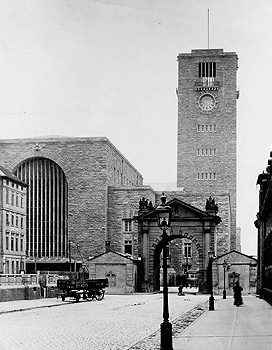| |
 |
The Beginnings
Towards the end of the 19th century, railway traffic increased greatly, so Stuttgart needed a bigger and better station. After long investigations concerning the new location, King Wilhelm II of Wuerttemberg decided on today´s location, in front of the city gate.
|
 |

The city gate before demolition in 1922
|
 |
|
 |
Alternatives such as moving the station to Bad Cannstatt in the Neckar Valley, or creating a through-station with an extensive tunnel system, were investigated but rejected, since 95% of travellers named Stuttgart as their destination.
|
|
|
|
| |
|
|
|
|
| |